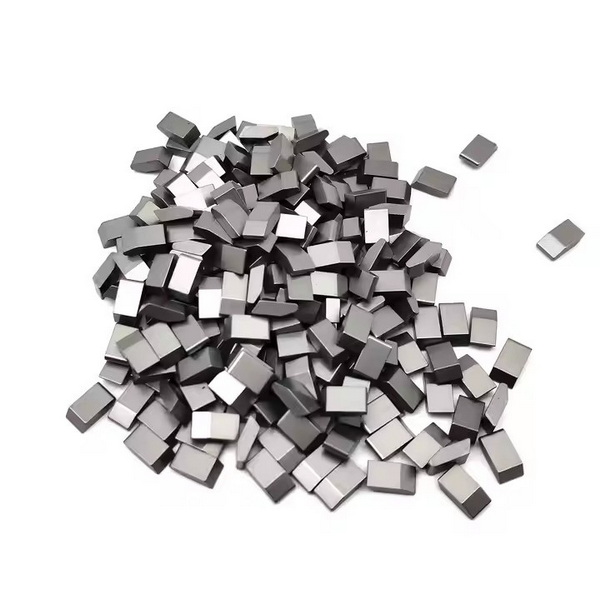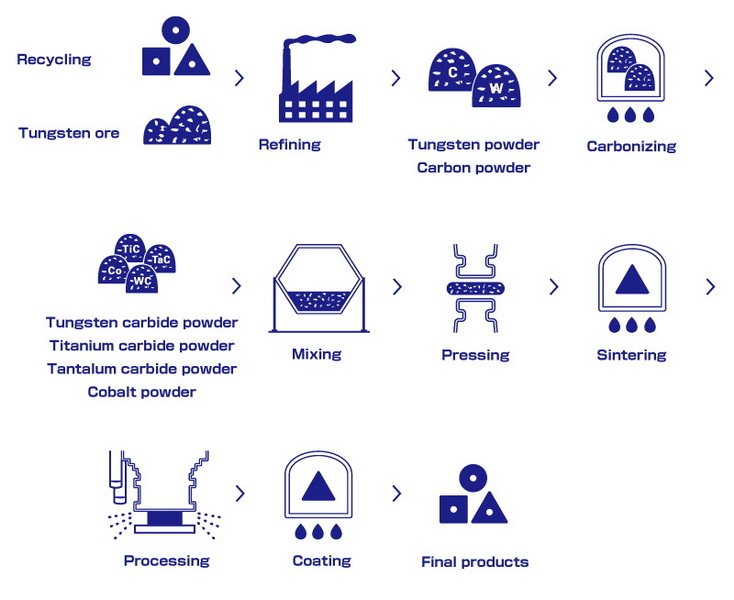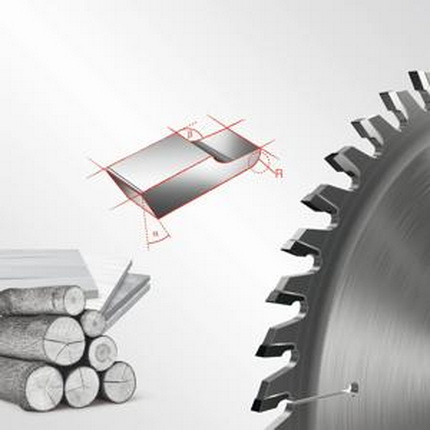Content Menu
● Introduction to Carbide and Steel
>> Carbide
>> Steel
● Properties Comparison
>> Hardness
>> Toughness
>> Wear Resistance
>> Heat Resistance
● Applications of Carbide Location Pins
>> Industrial Applications
>> Mining and Drilling
>> Construction
● Manufacturing Process of Carbide Location Pins
● Maintenance and Care of Carbide Location Pins
● Economic Considerations
>> Cost-Benefit Analysis
● Environmental Impact
>> Sustainability Initiatives
● Future Developments
>> Emerging Technologies
● Conclusion
● FAQs
>> 1. What are the primary advantages of carbide over steel in location pins?
>> 2. How does the hardness of carbide compare to steel?
>> 3. What are the typical applications of carbide location pins?
>> 4. How does carbide perform in high-temperature environments?
>> 5. Are carbide location pins more expensive than steel?
● Citations:
In the realm of industrial manufacturing, the choice of materials for critical components such as location pins can significantly impact the efficiency and longevity of machinery and tools. Carbide location pins, particularly those like the Carbide Products FEB432-006 location pin, have gained prominence due to their superior durability compared to steel. This article delves into the properties and applications of carbide location pins, exploring why they are preferred over steel in various industries.

Introduction to Carbide and Steel
Carbide
Carbide is a compound of carbon and a less electronegative element, typically a metal. Tungsten carbide, a popular variant, combines tungsten and carbon to form a material known for its extreme hardness, high melting points, and excellent wear resistance. These properties make carbide materials ideal for cutting tools, abrasives, and other applications where durability is crucial.
Steel
Steel is an alloy primarily composed of iron and carbon, with carbon content typically ranging from 0.2% to 2.1%. High-speed steel (HSS), a type of tool steel, often contains additional alloying elements like tungsten, molybdenum, and vanadium. Steel exhibits a balance of strength, toughness, and ductility, making it versatile for various applications.
Properties Comparison
Hardness
- Tungsten Carbide: Tungsten carbide significantly outperforms steel in terms of hardness. Carbide tools typically have a hardness of 85-95 HRA, which is much higher than the 62-65 HRC of high-speed steel tools. This superior hardness allows carbide to maintain a sharper cutting edge for longer periods and machine harder materials more effectively.
- Steel: While steel is less hard than carbide, it offers greater toughness, making it more resistant to chipping and breakage.
Toughness
- Steel: Steel generally exhibits greater toughness compared to carbide. High-speed steel has an impact toughness of 0.18-0.32 MJ/m², which is higher than that of carbide. This makes steel more suitable for applications where impact resistance is crucial.
- Carbide: Carbide, being a ceramic material, is more brittle and prone to fracturing under impact, despite its higher hardness.
Wear Resistance
- Carbide: Carbide demonstrates superior wear resistance compared to steel. The high hardness and presence of hard carbide particles in its microstructure contribute to this property. Carbide tools maintain their cutting edge and dimensional stability for longer periods, especially when machining abrasive materials.
- Steel: Steel offers good wear resistance but is inferior to carbide in this aspect.
Heat Resistance
- Tungsten Carbide: Tungsten carbide outperforms steel in heat resistance. Carbide tools can maintain their hardness and cutting efficiency at temperatures up to 800-1000°C. This superior heat resistance allows carbide tools to operate at higher cutting speeds.
- Steel: The hardness of high-speed steel tools begins to decrease significantly at temperatures above 500°C.
Applications of Carbide Location Pins
Carbide location pins, such as the Carbide Products FEB432-006 location pin, are used in various industries due to their durability and precision. These pins are essential in applications where high accuracy and resistance to wear are critical.
Industrial Applications
- Machining and Tooling: Carbide location pins are used in precision machining to ensure accurate positioning and alignment of parts. Their high hardness and wear resistance make them ideal for demanding environments.
- Military and Aerospace: In these sectors, carbide components are valued for their strength and resistance to extreme conditions.
Mining and Drilling
- Mining Tools: Carbide is used in mining tools due to its ability to withstand abrasive conditions and maintain tool life.
- Oil and Gas Drilling: Carbide drill bits and wear parts are crucial in the oil and gas industry for their durability in high-pressure environments.
Construction
- Building and Infrastructure: Carbide components are used in construction equipment for their wear resistance and durability.
Manufacturing Process of Carbide Location Pins
The manufacturing process of carbide location pins involves several critical steps:
1. Powder Preparation: Tungsten carbide powder is mixed with a binder, typically cobalt, to enhance sintering properties.
2. Compaction: The powder mixture is compacted into the desired shape using techniques such as cold isostatic pressing or injection molding.
3. Sintering: The compacted parts are then sintered at high temperatures (around 1400°C) in a vacuum or hydrogen atmosphere to remove the binder and achieve full density.
4. Grinding and Polishing: After sintering, the carbide parts are ground and polished to achieve precise dimensions and surface finish.
5. Quality Control: Final products undergo rigorous inspection to ensure they meet specifications.

Maintenance and Care of Carbide Location Pins
To maximize the lifespan of carbide location pins, proper maintenance and care are essential:
1. Cleaning: Regularly clean the pins to remove debris and prevent corrosion.
2. Storage: Store carbide pins in a dry environment to prevent moisture exposure.
3. Handling: Handle carbide components with care to avoid impact damage.
4. Inspection: Regularly inspect pins for signs of wear or damage.
Economic Considerations
While carbide location pins offer superior durability, they are generally more expensive than steel due to the complex manufacturing process and high-quality raw materials required. However, their extended lifespan and reduced maintenance needs often offset these initial costs over time.
Cost-Benefit Analysis
- Initial Cost: Higher upfront cost due to advanced materials and manufacturing techniques.
- Long-term Savings: Reduced replacement and maintenance costs due to extended tool life.
- Productivity Increase: Enhanced precision and durability lead to improved manufacturing efficiency.
Environmental Impact
The production of carbide components involves energy-intensive processes and the use of rare earth metals. However, the extended tool life and reduced waste generation associated with carbide tools can contribute to a more sustainable manufacturing environment.
Sustainability Initiatives
- Recycling Programs: Implementing recycling programs for carbide tools can help reduce waste and conserve resources.
- Energy Efficiency: Improving manufacturing processes to reduce energy consumption can minimize environmental impact.
Future Developments
Advancements in carbide technology are ongoing, with research focusing on improving toughness and reducing production costs. New manufacturing techniques, such as additive manufacturing, are being explored to enhance the efficiency and sustainability of carbide production.
Emerging Technologies
- Additive Manufacturing: This method allows for complex geometries and reduced material waste, potentially lowering production costs.
- Nanomaterials: Incorporating nanomaterials into carbide structures could enhance mechanical properties further.
Conclusion
Carbide location pins, exemplified by products like the Carbide Products FEB432-006 location pin, offer superior durability compared to steel due to their hardness, wear resistance, and heat resistance. These properties make them indispensable in various industrial applications where precision and longevity are paramount.

FAQs
1. What are the primary advantages of carbide over steel in location pins?
Carbide offers superior hardness, wear resistance, and heat resistance compared to steel, making it ideal for applications requiring high precision and durability.
2. How does the hardness of carbide compare to steel?
Carbide tools typically have a hardness of 85-95 HRA, significantly higher than the 62-65 HRC of high-speed steel tools.
3. What are the typical applications of carbide location pins?
Carbide location pins are used in precision machining, military and aerospace, mining, oil and gas drilling, and construction due to their durability and precision.
4. How does carbide perform in high-temperature environments?
Carbide tools maintain their hardness and cutting efficiency at temperatures up to 800-1000°C, outperforming steel in heat resistance.
5. Are carbide location pins more expensive than steel?
Yes, carbide location pins are generally more expensive than steel due to their superior properties and manufacturing process.
Citations:
[1] https://cowseal.com/carbide-vs-steel/
[2] https://www.carbide-part.com/blog/tungsten-carbide-pin-gages-a-deep-dive-into-the-craftsmanship-of-pin-gage-materials/
[3] https://www.imssupply.com/catalog/carbide-products-inc/feb432-006.html?pid=1819940
[4] https://www.hdchasen.com/carbide-tipped-ejector-pins-2
[5] https://patents.google.com/patent/EP1219861A1/en
[6] https://www.linkedin.com/pulse/top-10-applications-carbide-inserts-modern-industries-brjqc
[7] https://www.ibccoatings.com/locator-pins-welding-pins-ceratough/
[8] https://www.preciseceramic.com/blog/silicon-nitride-used-as-welding-location-pins.html
[9] https://tungstenparts.com/does-tungsten-carbide-tarnish/
[10] https://www.carbide-part.com/blog/a-comprehensive-analysis-of-the-differences-between-tungsten-carbide-tools-and-stainless-steel-tools/
[11] https://www.hyperionmt.com/en/Resources/library/tungsten-carbide-core-pins/
[12] https://www.carbide-products.com/blog/applications-of-carbide/
[13] https://www.ls-carbide.com/news/what-is-tungsten-carbide-used-for-.htm
[14] https://github.com/kln-courses/tmgu17/blob/master/visualization/data/FTDA-1991-0923.xml.json
[15] https://www.carbide-part.com/blog/what-are-the-differences-between-high-speed-steel-and-tungsten-carbide/
[16] https://industrialmetalservice.com/metal-university/differentiating-tungsten-carbide-vs-steel-and-other-tooling/
[17] https://archive.org/stream/FinancialTimes1979UKEnglish/Sep%2025%201979,%20Financial%20Times,%20%2327974,%20UK%20(en)_djvu.txt
[18] https://www.bladeforums.com/threads/hardness-carbides-and-how-they-affect-durability-and-edge-retention.909226/
[19] https://epictool.ca/the-durability-of-carbide-tools/
[20] https://www.lfc.com.sg/blog/detail/eisen-ceramic-carbide-pin-gauges
[21] https://grafhartmetall.com/en/the-advantages-of-tungsten-carbide-over-traditional-tools/
[22] https://www.practicalmachinist.com/forum/threads/grades-of-carbide.226385/
[23] https://turnawoodbowl.com/carbide-vs-traditional-hss-wood-turning-tools-high-speed-steel/
[24] https://orchid.ganoksin.com/t/steel-drawplate-vs-carbide-drawplate/43136
[25] https://www.reddit.com/r/Archery/comments/9unsv7/steel_vs_tungsten_both_120gr/
[26] https://markinbox.com.au/products/carbide-pin-60-tip-angle-extra-hardness
[27] https://www.istockphoto.com/photos/carbide-tools
[28] https://www.centaurforge.com/Tungsten-Carbide-Pins/productinfo/TCPIN/
[29] https://community.carbide3d.com/t/bitzero-but-on-a-locating-pin/60459
[30] https://markinbox.com.au/products/bsd-carbide-pin-90-tip-angle-standard-length
[31] https://www.plasticstoday.com/plastics-processing/tungsten-carbide-for-tooling
[32] https://stock.adobe.com/search?k=carbide
[33] https://www.carrlane.com/engineering-resources/technical-information/manual-workholding/locating-devices/locating-pins
[34] https://www.carbidetek.com/product/0-25-dia-carbide-pins/
[35] https://www.carbidetek.com/product/dia-0625-carbide-pins/
[36] https://repository.up.ac.za/bitstream/handle/2263/24896/03chapter3.pdf?sequence=4
[37] https://www.carbide-part.com/blog/tungsten-carbide-machining-process/
[38] https://www.ame.com/precision-locating-pins
[39] https://craftstech.net/category/tungsten-carbide/
[40] https://eurobalt.net/blog/2022/03/28/all-the-applications-of-tungsten-carbide/
[41] https://www.miteebite.com/products/locating-pins-and-liners/
[42] https://www.sciencedirect.com/science/article/abs/pii/S0043164898003809
[43] https://www.manufacturingtomorrow.com/article/2019/08/5-ways-carbide-metal-compound-is-used-in-the-manufacturing-industry/13794
[44] https://www.findtop.com/different-types-of-locating-pins-a-guide-for-e2e-video/
[45] https://generalcarbide.com/pdf/General-Carbide-Designers-Guide-Tungsten-Carbide.pdf
[46] https://www.tungco.com/insights/blog/5-tungsten-carbide-applications/
[47] https://community.carbide3d.com/t/newbie-questions-registration-pins-and-left-right-pass-through/22311
[48] https://www.carbidetek.com/faqs/
[49] https://markinbox.com.au/products/carbide-pin-120-tip-angle-extra-length
[50] https://www.reddit.com/r/Machinists/comments/1eqy8f9/grinding_carbide_pins/
[51] https://community.carbide3d.com/t/improving-results-when-two-sided-machining-using-locating-pins/27012
[52] https://www.retopz.com/57-frequently-asked-questions-faqs-about-tungsten-carbide/
[53] https://www.versatiletechnology.com.au/maintenance-guide/checking-for-datum-pin-wear/
[54] https://eternaltools.com/blogs/tutorials/7-facts-about-tungsten-carbide-burrs-and-how-to-use-them
[55] https://www.tungco.com/insights/blog/frequently-asked-questions-used-tungsten-carbide-inserts/
[56] https://www.generalcarbide.com/wp-content/uploads/2019/04/GeneralCarbide-Designers_Guide_TungstenCarbide.pdf
[57] https://www.reddit.com/r/turning/comments/zmutaq/questions_about_carbide/
[58] https://metalworkforums.com/showthread.php?t=145070
[59] https://www.amanatool.com/forum/carbide_-vs-_steel
[60] https://archive.org/stream/FM21_6_1945/FM21_6_1945_djvu.txt
[61] https://www.aimsindustrial.com.au/blog/hss-vs-carbide
[62] https://www.syalons.com/2024/11/05/ceramic-vs-tool-steel-vs-carbide-wire-guides/
[63] https://www.kahnforge.com/products/kahn-carbide-pins-5-1mm-100-ea
[64] https://www.shutterstock.com/search/carbide
[65] https://www.syalons.com/2024/07/08/silicon-carbide-vs-tungsten-carbide-wear-applications/
[66] https://www.scmtstool.com/blog/What-Are-the-Industrial-Applications-of_bid-316545588.html
[67] https://www.kippusa.com/en-us/products/METRIC/Support-elements-locating-elements-stop-elements/Locating-pins-rest-pads/c/21021
[68] https://uk.misumi-ec.com/pdf/fa/p0833.pdf
[69] https://pickersridge.com.au/how-long-do-carbide-inserts-last/
[70] https://shop.machinemfg.com/the-pros-and-cons-of-tungsten-carbide-a-comprehensive-guide/
[71] https://community.carbide3d.com/t/tiling-index-pin-location/66704
















